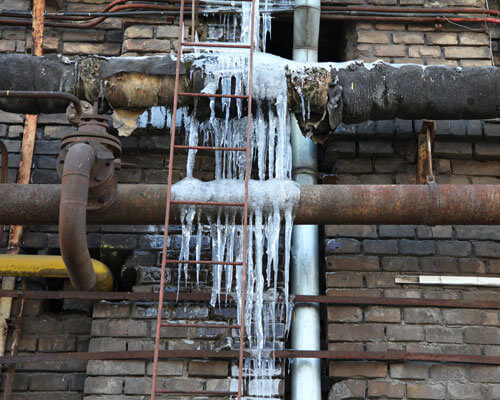What are your opinions with regards to Helpful Tips to Prevent Frozen Pipes this Winter?

Winter can damage your pipes, particularly by freezing pipes. Here's how to stop it from occurring and what to do if it does.
Introduction
As temperatures drop, the risk of frozen pipes increases, potentially leading to pricey repairs and water damage. Comprehending exactly how to avoid icy pipes is essential for house owners in cool climates.
Recognizing Icy Pipes
What creates pipelines to freeze?
Pipelines freeze when exposed to temperature levels listed below 32 ° F (0 ° C) for expanded periods. As water inside the pipelines freezes, it expands, putting pressure on the pipe walls and possibly triggering them to break.
Threats and damages
Icy pipes can lead to water system disturbances, residential property damage, and pricey repair services. Burst pipes can flooding homes and cause considerable architectural damages.
Signs of Frozen Water Lines
Recognizing frozen pipelines early can avoid them from rupturing.
Exactly how to identify icy pipelines
Try to find decreased water circulation from faucets, unusual odors or noises from pipelines, and noticeable frost on exposed pipes.
Avoidance Tips
Insulating prone pipes
Wrap pipes in insulation sleeves or use warm tape to shield them from freezing temperature levels. Concentrate on pipes in unheated or exterior locations of the home.
Home heating methods
Keep interior areas adequately warmed, specifically locations with pipes. Open cabinet doors to permit cozy air to flow around pipes under sinks.
Securing Outside Pipes
Garden pipes and exterior taps
Disconnect and drain garden tubes before winter months. Set up frost-proof spigots or cover outdoor taps with insulated caps.
What to Do If Your Pipelines Freeze
Immediate activities to take
If you believe frozen pipes, keep faucets open to relieve pressure as the ice thaws. Utilize a hairdryer or towels taken in hot water to thaw pipelines gradually.
Long-Term Solutions
Structural modifications
Think about rerouting pipes away from exterior wall surfaces or unheated locations. Add extra insulation to attics, cellars, and crawl spaces.
Updating insulation
Invest in high-quality insulation for pipelines, attics, and wall surfaces. Correct insulation helps preserve regular temperature levels and lowers the threat of icy pipelines.
Verdict
Avoiding icy pipes requires positive procedures and quick actions. By understanding the causes, signs, and safety nets, house owners can secure their plumbing during cold weather.
5 Ways to Prevent Frozen Pipes
Drain Outdoor Faucets and Disconnect Hoses
First, close the shut-off valve that controls the flow of water in the pipe to your outdoor faucet. Then, head outside to disconnect and drain your hose and open the outdoor faucet to allow the water to completely drain out of the line. Turn off the faucet when done. Finally, head back to the shut-off valve and drain the remaining water inside the pipe into a bucket or container. Additionally, if you have a home irrigation system, you should consider hiring an expert to clear the system of water each year.
Insulate Pipes
One of the best and most cost-effective methods for preventing frozen water pipes is to wrap your pipes with insulation. This is especially important for areas in your home that aren’t exposed to heat, such as an attic. We suggest using foam sleeves, which can typically be found at your local hardware store.
Keep Heat Running at 65
Your pipes are located inside your walls, and the temperature there is much colder than the rest of the house. To prevent your pipes from freezing, The Insurance Information Institute suggests that you keep your home heated to at least 65 degrees, even when traveling. You may want to invest in smart devices that can keep an eye on the temperature in your home while you’re away.
Leave Water Dripping
Moving water — even a small trickle — can prevent ice from forming inside your pipes. When freezing temps are imminent, start a drip of water from all faucets that serve exposed pipes. Leaving a few faucets running will also help relieve pressure inside the pipes and help prevent a rupture if the water inside freezes.
Open Cupboard Doors
Warm your kitchen and bathroom pipes by opening cupboards and vanities. You should also leave your interior doors ajar to help warm air circulate evenly throughout your home.

I have been very taken with Helpful Tips to Prevent Frozen Pipes this Winter and I'm hoping you enjoyed the entire post. Sharing is good. You won't know, you may very well be helping someone out. We treasure your readership.
Visit Our Site